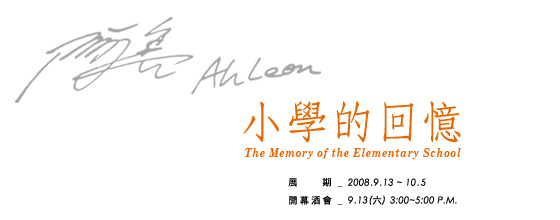 |
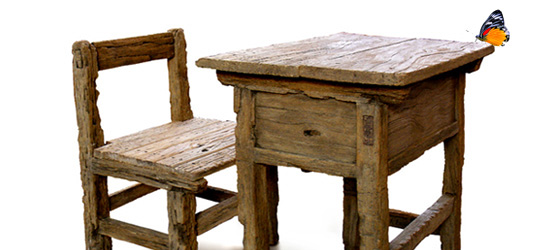 |
 |
| |
Childhood Ever |
| |
Memories could be rotten, as well as modern.
In the innocent elementary school year, besides the treasure in the pencil box and the penumbral relationship between boys and girls, the most special memory is about the desk and chair. Girls treating them with good care, always find boys on the next seat harm them without mercy. Nowadays when seeing the paint-flaked chairs and desks scratched roughly with children¡¦s words, we are stricken that many vicissitudinary years has past away. The past, the chair and desk of old days, present the realistic life with a postmodern way. Silent but without sorrow, it still maintains the warm of innocence. Although the cram schools of then and the after-school coaching of now both limit the functions of desks and chairs, they still cannot control the thoughts like floating clouds and the hearts flying with swings in the classroom. More than that the one-time popular comic book Si-lang and Zhen-ping hidden in the drawers are now replaced by various Japanese comic books and video games. Different generations share similar childhood. The playmates of young had separated for their independent life, but the desks and chairs are like footprints on the sown. Although having gone blurry, they still hold the touching stories and irreplaceable memories.
The vast scale and expression of time switching of the huge bridge ¡§Pioneering Hardship¡¨, make artist A-liang¡¦s pottery sculpture well-known in the international art world. The western modern art history called his realism style as ¡§Trompe l¡¦oeil¡¨. ¡§Tree Trunk Tea Pot¡¨ and ¡§Tofu¡¨ that followed are even more admirable. This year he has devoted to the creation ¡§Memories of Elementary School¡¨ which with plain desks and chairs, we are taken into the travel of time and relive the childhood. Going beyond material realism, installation, surrealism, A-liang applies the new spirit of modern sculpture to clay pottery art.
No matter for the winkles of tress, sleeping woods, iron nails, or tofu, A-liang always represents the extreme challenge to the limit of visual art. The soft and smooth tofu also reflects the memory of childhood: after the school rush to take a bow to the door when hearing the voice of tofu street vendor. The vender carefully lifted the cotton cloth, cut a cube of hot tofu, served with little say sauce. The irresistible smell of soybean is the cherished memory soft like cloud, echoing in the dept of heart. A-liang has turned Miaoli clay, which is as hard as stone, into soft smooth tofu and the old plank that holds the tofu. The scene of soft white tofu on the plank of deep lines and cracks brings back our vivid memories of old days, exhibited with delicate modern art, represented lightly, but strongly strike our hearts.
A-liang uses clay pottery to mimic the textures of wood skin, bridges, tofu, plank, desk and chairs, as well as tree trunks and branches.Clay pottery is the material that the artist uses to mimic the textures of wood skin, bridges, tofu plank, desks, chairs as well as tree trunks and branches. He not only shows an excellence in realism skills, but the kiln firing techniques or high temperature tell of his insistence and passion for art. The style is not formed by chance. The delicacy of tea pot and the lifelike touch of tree trunks have perfectly completed A-liang¡¦s unique creativity of a tree tea pot. His tree tea pots appear to have concrete functions of tree pots. However, although A-liang¡¦s tree pots own the concrete shape with practical function, they are in fact abstract sculptures with the expressions of tea pots. He draws his inspirations from daily life, and adds in realism and essences into his creation that surprises and amazes us!?
A-liang¡¦s works of memory series bring the viewers the same touching feelings and the recalling of memories. Childhood may not stop in the stilled memories, but it rests upon A-ling¡¦s ¡§School Desks and Chairs¡¨, anchors in the ¡§Tree Trunk Tea Pots¡¨ and ¡§Tofu¡¨, and is full of exclamation marks of A-liang¡¦s style. |
| |
| Celia Huang |
|

|
| The Desk and Chair I Sat On |
| |
e¡¦s not my elementary school classmate but he
Made a desk and chair I sat on.
 |
 Her Chair Her Chair
 2008¡@H 61cm x L 40cm x W36cm 2008¡@H 61cm x L 40cm x W36cm
 Stoneware Stoneware |
|
Some of my elementary school classmates have become
Emergency room doctors, some have become
International law attorneys, some
I haven¡¦t seen in decades
Until I see this desk and chair.
He¡¦s not my elementary school classmate
But the desk and chair he made were etched with my
Scribbles of Wu-Ming Math drills, the graduation speech I prepared
To receive the county magistrate¡¦s award, and under all these,
A book of Ke Chi-Hua English Grammars. The desk and chair
Scratchy and pitted, do look like the path of life;
Rotten and broken like time.
He doesn¡¦t know I¡¦ve send well-polished glasses to the drifting clouds,
Delivered the window frame, paint flaked, to the wind.
The folkdance songs skipped over and over,
Young lady teacher disappeared in a wink of an eye,
The sandlot suddenly raised a dust mist; and the
Long-jump boy in shorts leaped in the air,
Into a desk and chair in a parabolic curve, and
Into the memory, stilled.
The sky above the fish pond in the village front, no one takes away;
The wire poles on Water-end Street, no one takes away;
The fallen blossoms under the flame tree, no one takes away, and
The boy is still on the seat I used to sit.
He is not my elementary school classmate, but he, In the dream kiln, is making my very desk and chair. |
| |
A preview of Chen Ching-Liang¡¦s new pottery works ¡§The Memory of
the Elementary School¡¨ with school desks and chairs as the thematic image. |
| |
| 2008/8/2 written in Hualien Chen I-Chih |
|
|
| |
 |
 The Memory of the Elementary School The Memory of the Elementary School
 2008¡@Table_H66 x L60 x W44cm¡@Chair_H62 x L36 x W39cm 2008¡@Table_H66 x L60 x W44cm¡@Chair_H62 x L36 x W39cm
 Stoneware Stoneware |
|
|
| |
| |
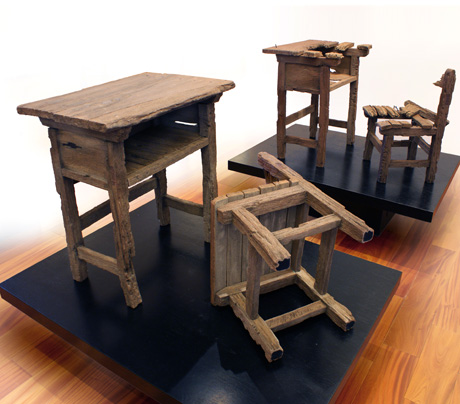 |
 The Memory of the Elementary School (Two sets) The Memory of the Elementary School (Two sets)
 2008¡@Table_H66 x L60 x W44cm¡@Chair_H62 x L36 x W39cm 2008¡@Table_H66 x L60 x W44cm¡@Chair_H62 x L36 x W39cm
 Stoneware Stoneware |
|
|
| |
| |
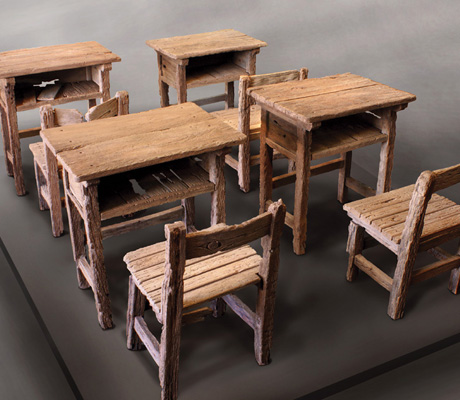 |
 The Memory of the Elementary School (Four sets) The Memory of the Elementary School (Four sets)
 2008¡@Table_H66 x L60 x W44cm¡@Chair_H62 x L36 x W39cm 2008¡@Table_H66 x L60 x W44cm¡@Chair_H62 x L36 x W39cm
 Stoneware Stoneware |
|
|
| |
| |
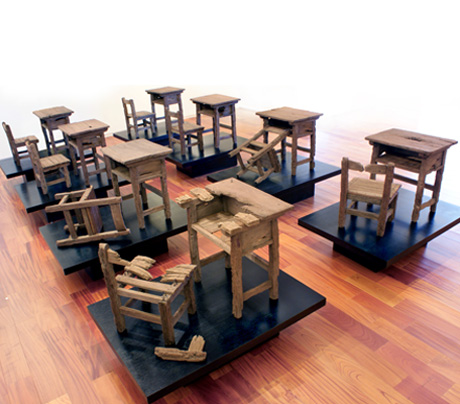 |
 The Memory of the Elementary School (Six sets) The Memory of the Elementary School (Six sets)
 2008¡@Table_H66 x L60 x W44cm¡@Chair_H62 x L36 x W39cm 2008¡@Table_H66 x L60 x W44cm¡@Chair_H62 x L36 x W39cm
 Stoneware Stoneware |
|
|
| |
| |
The Best Tofu |
| |
Choose organic soybeans planted locally, which are not in big size, but in dense and solid taste.
First, after selecting carefully, soak the soybeans in pure high mountain spring for five hours. Time should be extended when the weather is cold.
Then, mill the soybeans into milk by the millstone. During the process sufficient water should be added. Later mix soybean milk and dregs in a big cooking vessel, stew by firewood to make a smoked flavor.
After soybean milk is boiled, filter the dregs by organic cotton cloth.
Second, add salty liquor to coagulate the soybean milk. Never use gypsum powder, nor regular fermented crude salt. It would be the best to use salty liquor from Chi-Gu or Volcano of Luo.
When the soybean milk turns into tufo pudding, put it in a tofu mold. The mold is made with Chinese cypress without any nail, paint, or vanish, and it exudes natural fragrance to prevent mildew.
Besides, there is a bigger organic cotton cloth in the tofu mold for wrapping the tofu pudding.
And than, wrap the tofu pudding right way and stack them up by layers. Cover tofu puddings by tofu board, and press tightly with big cobblestones. The water will be squeezed out so that tofu is firmed in shape.
About half an hour, finally take out the pure and clean organic tofu. The board to hold tofu should be made with Chinese cypress too. The natural dark color would reflect tofu¡¦s brightness and cleanliness. In my imagination, the most traditional as well as the best-taste tofu in Taiwan is about this.
Mr. Chen Jing-Liang¡¦s Tofu Series recalled me the experience of visiting traditional hand-made tofu shops during more than ten-year travel between many Taiwanese local towns. Traditional Wang¡¦s Tufu in Shi-Ding, Luo Mountain Tofu in Wan-Jin, many small farms with organic gardens, and the daintiness about traditional salty liquor from Japan, all of these became my strict estimation of how great old-time tofu is made.
Above is my little note. |
| |
Liu Ka-shiang |
|
| |
| |
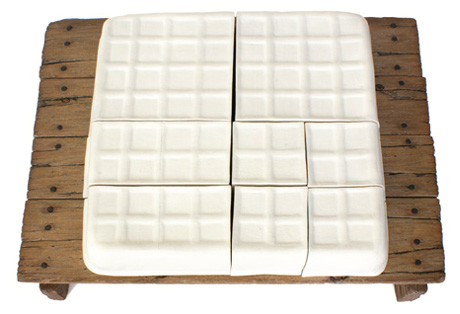 |
 Tofu I¡@ Tofu I¡@ 2004¡@L42 x W35cm¡@ 2004¡@L42 x W35cm¡@  Stoneware Stoneware |
|
|
| |
| |
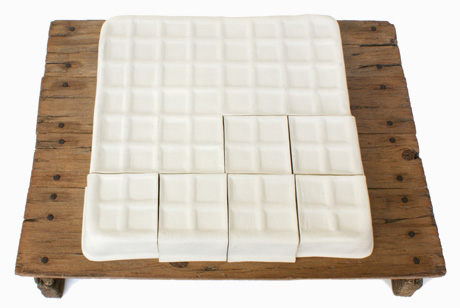 |
 Tofu III¡@ Tofu III¡@ 2004¡@L42 x W35cm¡@ 2004¡@L42 x W35cm¡@  Stoneware Stoneware |
|
|
| |
| |
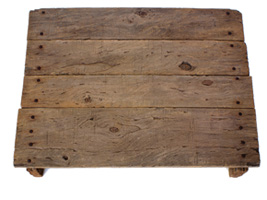 |
 Tofu Tray II¡@ Tofu Tray II¡@
 2004¡@L42 x W35cm¡@ 2004¡@L42 x W35cm¡@
 Stoneware Stoneware |
|
|
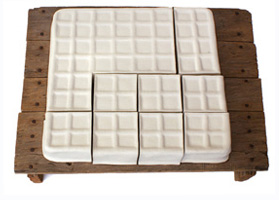 |
 Tofu II Tofu II
 2004¡@L42 x W35cm 2004¡@L42 x W35cm
 Stoneware Stoneware |
|
|
|
| |
| |
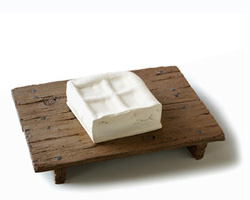 |
 A Lithe Cloud A Lithe Cloud
 2004¡@L19 x W13.5cm 2004¡@L19 x W13.5cm
 Stoneware Stoneware |
|
|
 |
 Tofu Tray IV¡@ Tofu Tray IV¡@
 2004¡@L42 x W35cm 2004¡@L42 x W35cm
 Stoneware Stoneware |
|
|
|
| |
| |
 |
 10 Pallets of Tofu Installation¡@ 10 Pallets of Tofu Installation¡@ 2000¡@L42 x W32cm x 10pieces¡@ 2000¡@L42 x W32cm x 10pieces¡@  Stoneware Stoneware |
|
|
| |
| |
| Chen Jing-Liang¡¦s Trunk Pots |
| |
Just as an orchid mantis adept in simulation, when resting on the orchid petal, it actually make we believe it is indeed a part of the flower; or like a leaf insect, which is almost a combination of several ragged leafs, fresh or withered, veins and stems are incredibly vivid, even with incredibly real scars of crushed leafs. However an orchid mantis is not an orchid; a leaf insect is not a leaf. They have their independent lives. Mr. Chen Jing-Liang¡¦s trunk pots is made with amazing effort of realism, simulating branches like firewoods being able to make fire, simulating annual rings as decades and centuries has past. Natural grains, chopped marks by ax, snapped scars and warts are as realistic as we believe that when the spring comes, green sprouts would bud out of the pots. But the artist does not aim realism as the ultimate goal. By integrally collocating, carefully selecting and transforming, he made the pottery pots active; running, dancing, stretching, joyful, solemn, proudly standing¡Xthey have gained independent lives. Ascending from the practical function of pots and the realistic skill of tree trunks, they become spiritual symbols of more profound meanings. |
| |
Wang Sheng-hong |
|
| |
| |
 |
 Horizontal Tree Trunk T-pot¡@ Horizontal Tree Trunk T-pot¡@ 2006¡@H48 x L65cm¡@ 2006¡@H48 x L65cm¡@  Stoneware Stoneware |
|
|
| |
| |
 |
 Sway Elegantly¡@ Sway Elegantly¡@ 2002¡@H50 x W27.5cm¡@ 2002¡@H50 x W27.5cm¡@  Stoneware Stoneware |
|
|
| |
| |
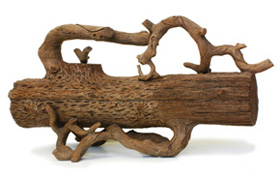 |
 Big Horizontal Tree Trunk T-pot Big Horizontal Tree Trunk T-pot
 2005¡@H22 x L58 x W20cm 2005¡@H22 x L58 x W20cm
 Stoneware Stoneware |
|
|
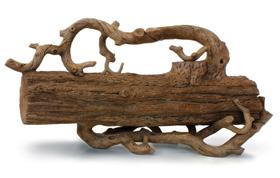 |
 Big Horizontal Tree Trunk T-pot (another side) Big Horizontal Tree Trunk T-pot (another side)
 2005¡@H22 x L58 x W20cm 2005¡@H22 x L58 x W20cm
 Stoneware Stoneware |
|
|
|
| |
| |
 |
 Branch T-pot ¡V Shine with Moon Branch T-pot ¡V Shine with Moon
 2005¡@H71 x L55 x W23cm 2005¡@H71 x L55 x W23cm
 Stoneware Stoneware |
|
|
 |
 Branch T-pot ¡V Shine with Moon (another side) Branch T-pot ¡V Shine with Moon (another side)
 2005¡@H71 x L55 x W23cm 2005¡@H71 x L55 x W23cm
 Stoneware Stoneware |
|
|
|
| |
| |
 |
 Tea Bowl with Saucer¡@2001 Tea Bowl with Saucer¡@2001
 ªM H9.8 x W12.7cm¡@¯ù¦« H3.7 x W18cm ªM H9.8 x W12.7cm¡@¯ù¦« H3.7 x W18cm
 Stoneware Stoneware |
|
|
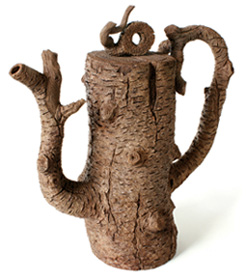 |
 Little Bow of Tree Branch T-pot Little Bow of Tree Branch T-pot
 2006¡@H28 x L29cm 2006¡@H28 x L29cm
 Stoneware Stoneware |
|
|
|
| |
| |
 |
 Tofu T-pot 08-pallet¡@ Tofu T-pot 08-pallet¡@ 2003¡@H17 x L16cm¡@ 2003¡@H17 x L16cm¡@  Stoneware Stoneware |
|
|
| |
| |
Ah Leon's work intrigues and surprises his viewers making them reflect on their own lives and background, while also drawing them into larger thoughts about the collective meaning of childhood. The desks are "old fashioned"--instantly recognizable as a classroom but for so many people around the world not where they studied--and that old fashioned quality actually strips them of a sense of specific time and place. The desks have been scribbled on and carved into by the imaginary students, and yet because they are not actual desks, they become placeholders and a blank canvas to be inscribed by the viewer's imagination.
Ah Leon's ability to make transcendent art is here. |
| |
Jan Stuart
Keeper of Asia¡@The British Museum |
| |
|
|
| |
| |
|